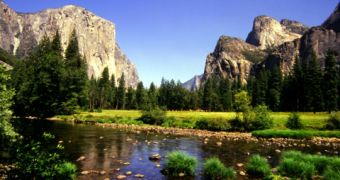Seeing how 2012's drought also fostered massive wildfires, the US Geological Survey (USGS) decided that it was high time to investigate how these natural disasters impact on the water sources nearby human communities.
Thus, USGS just released its latest report on how forest fires affect overall water quality.
They argue that, up until this moment, little was known about this pressing issue and that, because of this, drinking-water providers had trouble in taking the appropriate measures aimed at safeguarding public health.
In order to solve this environmental puzzle, USGS researchers looked into how downstream ecosystems in the Colorado Front Range responded to changes brought about by the 2010 Fourmile Canyon fire.
For those unaware, the Fourmille Canyon fire was responsible for destroying nearly 2,600 hectares (about 10 square miles) and roughly 160 homes, so one can easily imagine the damage this natural disaster left behind.
For research purposes, water samples were collected regularly, according to the following schedule: once every month during base flow, twice per week once the snows began to melt, and ever more frequently during heavy rainfalls.
They discovered that, in spite of said devastating wildfire, naturally occurring spring snowmelt runoffs did in fact increase nitrate concentrations in the water sources nearby the burnt areas, but this increase was something local water treatment facilities could easily cope with.
What is interesting is that, whenever thunderstorms and heavy downpours hit these portions of land, the amounts of dissolved organic carbon, nitrate and similar chemical compounds increased by 1 to 4 orders of magnitude.
As USGS explains, such sudden changes in the chemical balance of Colorado's water sources can very well negatively impact both on natural ecosystems, and on public health.
Therefore, local drinking-water providers must also pay attention to the findings of this study and plan their water management activities accordingly, especially given the fact that the impact of forest fires on water sources nearby can last for several years.

 14 DAY TRIAL //
14 DAY TRIAL //